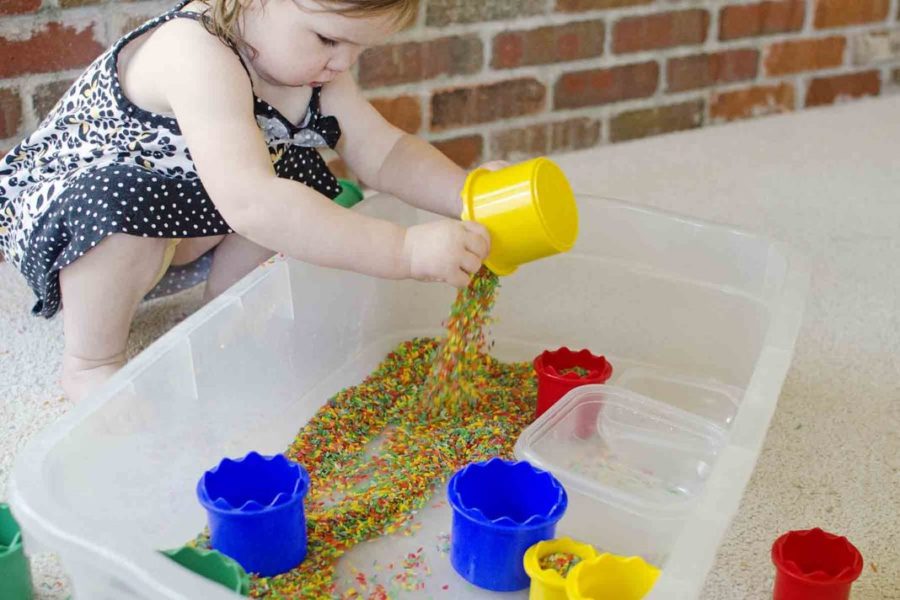Babies are such beautiful, life-filled, curious, and optimistic people. The excitement in which they have explored the universe is such a delight to watch. However, some of these traits must be imbibed from a very early age so that they are familiar with their surroundings and do not feel overwhelmed or frightened when they come into contact with something different. Many parents choose sensory bins for toddlers to give this knowledge. Sensory bins help children learn and explore “doing” and also give parents a few precious minutes to take care of the child. Read on to learn more about sensory bins and how they can aid in your life.
What Is a Sensory Bin?
There are never-ending alternatives when it comes to sensory bin concepts, but all sensory bins are essentially the same thing: bins of things that can be used by children, by themselves or with peers, siblings, or parents in a variety of texture, shape, and color. You can choose something to fill a bin which represents the unique personality and interests of your child. In addition, sensory bins are easy to alter, which is significant, since most children’s desires are one minute away.
One of the most common sensory bin fillers is water, sand, dry rice, dry beans, popcorn kernels, and water beads. These products are perfect for children to use in sensory bins until they can understand not to eat them. Look for safer choices, such as big, tactile balls, large pasta shells, age-appropriate plastic toys, linking rings, and, most simply, water, if you are planning to build a sensory bin for children.
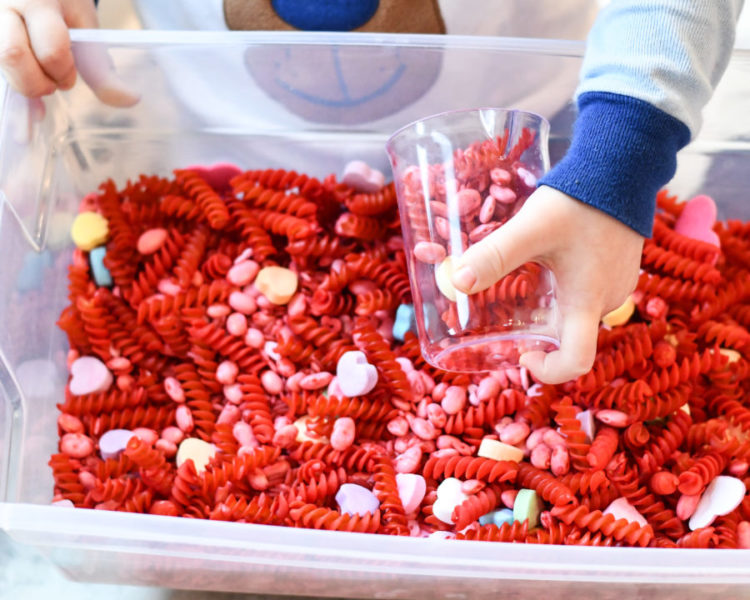
Benefits of Sensory Bins For Children
Here are only a few developmental skills sensory bins that can help to raise babies and toddlers:
1. Self-calming skills
It can be a fantastic experience for children fighting to control their feelings and behavior. “Sensory bins are also used by occupational therapists to support children with self-reliance and self-regulation. “Many children are overwhelmed by sensory feedback in the world, and using tactile play and fidgeting will help children enhance their sense of well-being.”
2. Cognitive development
A sensory bin offers children the opportunity to engage in a dump-and-fill, hide-and-seek style of play that helps improve their cognitive learning skills.
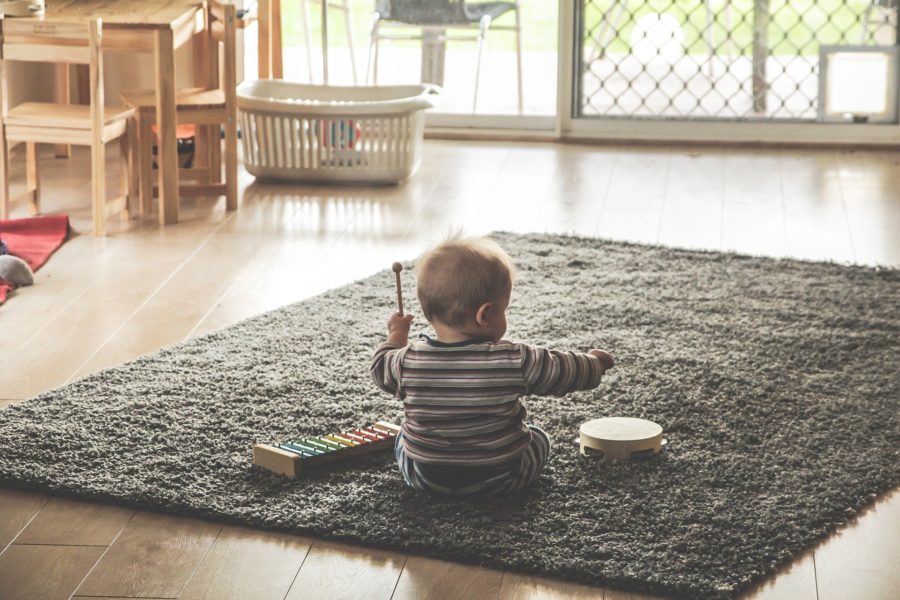
3. Sensory processing
As the name suggests, sensory bins allow children to use their senses when playing. Sight and touch take the lead here, but little ones will easily pick up the soothing sound of beans dropping into a cup or a squish of water beads as they pass through their little fingers. And if you are motivated to do this, don’t be afraid to add scent or even taste.
You have to build your very own sensory bin if you are ready for your little ones to achieve all these advantages and have a blast simultaneously.
4. Attention span
These activities will also help children better look after tasks, as children often enjoy them for longer periods than organized activities and turn-around games.
5. Fine Motor Skills
As the objects in the bins have various shapes, sizes, and textures, it helps to improve the motor skills of your child. It can be difficult for toddlers to carry, move around, and handle small items, but the sensory bins give them a fun way to participate and better understand them.
Tips for Playing in a Sensory Bin
We have a lot of tips that you can use to make this experience more effective and healthy before you get too excited and start making your own bins. They’re here!
- Instead of stuff that is destructive, select things you can reuse. You can save money and time by using materials again and spend it on seasonal materials which are only possible for a certain time of a year.
- Choose age-suitable items.
- Make sure you set up bins in such a way that they’re away from the main part of the house so that if it gets messy, you can clean up and nothing gets hurt.
- Ensure the bins are re-used for other tasks including color and letter sorting, names and words activities, etc.
- Include things that could also support your child in academics.
Sensory Bin Ideas For Children
You should play with more sophisticated sensory bin fillers when your child is old enough to realize that not everything is for eating. And that means you can create amazing, life-like sensory bins that, as they come up with tonnes of imaginative scenarios and games, let your little one be the master of the universe. When it comes to children ‘s sensory cabinets, here are a few exciting ideas to try out.
1. Snow sensory bin
Why not bring the snow inside when winter sets in and Jack Frost starts to bite? That’s just what Jackie did with this snow sensor bin at Happy Hooligans. Little People and real snow have been used by her to create an ingenious sensory bin that is perfect for little hands longing to play with white things.
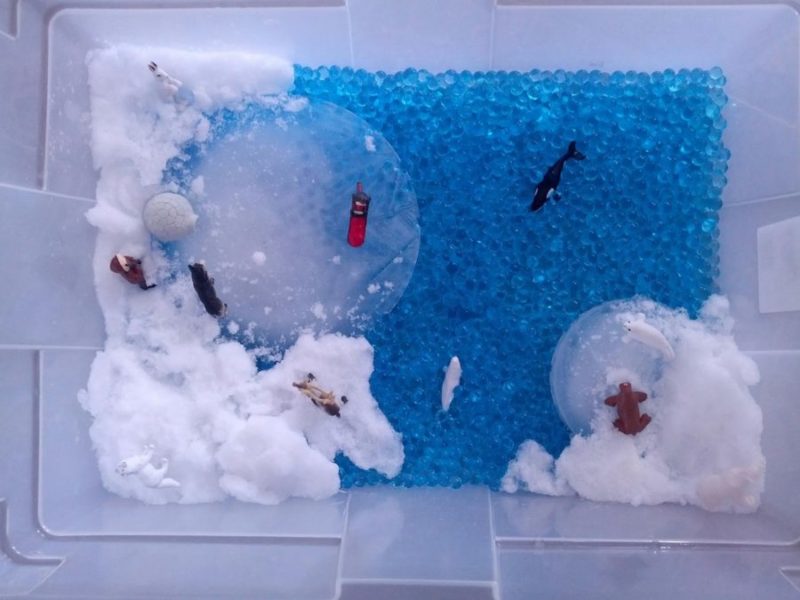
2. Beach sensory bin
We can’t get enough of this beautiful Kids Beach Sensory Bin. In a box with sand on one side and water on the other, create a biome separated by a jetty of coats. This sensory bin wraps everything in one with fun and learning! Let your toddler split the animals into land and water dwellers (with a little help from you, of course), or splash around in the water to make castles with the sand.
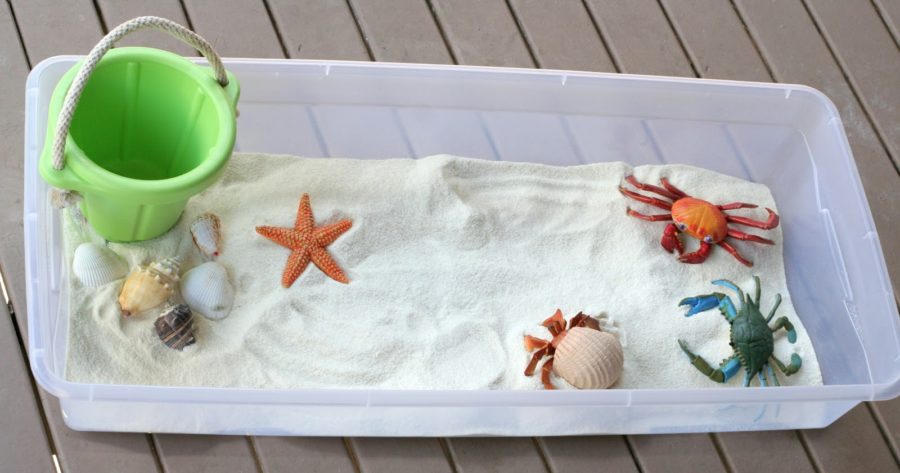
3. Rice sensory bin
Rice is one of the best sensory bin fillers out there because it’s relatively inexpensive. You can buy it in bulk bags that allow you to build a sensory bin big enough for a few kids to play at once. Not just that, you can add just about anything under the sun, and you can change it on a regular basis. Pick up a tube of plastic animals at a craft store and add them to the bin if your kids are fascinated with animals. And when the holiday rolls around, swap the toys to make a vacation-themed bin. Or just keep it easy and throw in some everyday kitchen equipment. We love this lovely sensory bin of rainbow rice from Jackie over at Happy Hooligans. A few bottles and utensils have been added to a sensory bin that looks so nice.
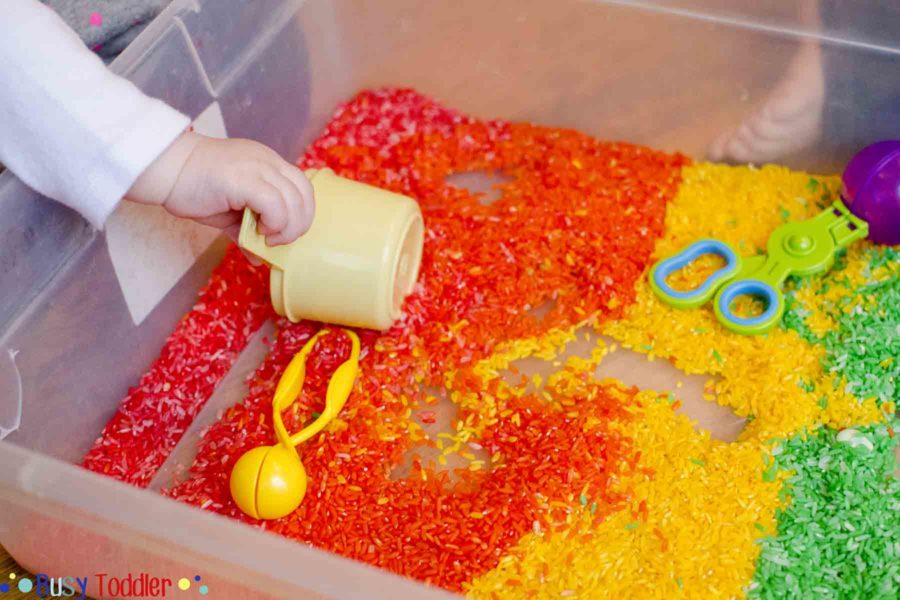
Sensory bins are definitely a great way to keep your kids busy, but also to get them to learn a lot. As adults, we sometimes underestimate the strength that can be achieved by a child’s mind. Since they’re rising, they’re a lot more impressive than we’d like to believe. We hope that the ideas we’ve put forward will help you make your own sensory corner of the house with a bunch of things that your child can play with and experience.



